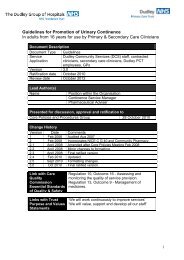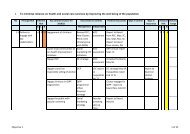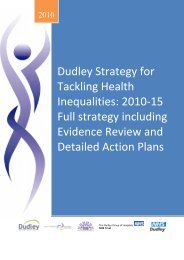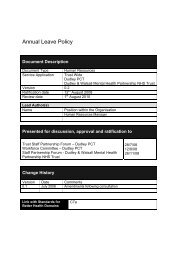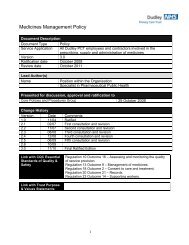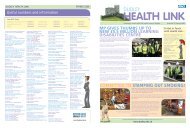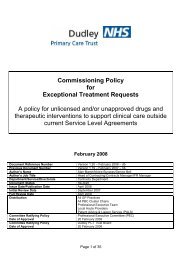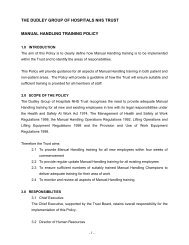Chronic Kidney Disease Pathway Document Description Presented ...
Chronic Kidney Disease Pathway Document Description Presented ...
Chronic Kidney Disease Pathway Document Description Presented ...
Create successful ePaper yourself
Turn your PDF publications into a flip-book with our unique Google optimized e-Paper software.
Cardiovascular Risk<br />
All patients with CKD have a greatly increased risk of developing heart disease<br />
and other diseases of blood vessels, including strokes. For many, this is more<br />
important than the danger of progressing to end-stage renal disease due to the<br />
10 fold increase in cardiovascular events and mortality at CKD stage 3.<br />
Furthermore, when events occur, mortality is higher for people with CKD and<br />
they have less favourable outcomes from intervention such as angioplasty. This<br />
increased risk begins at the very earliest stages, for example when there is<br />
microalbuminuria without a reduced eGFR. The prevalence of CKD at stage 3-5<br />
in the population is currently approximately 4.9%. However the prevalence of<br />
CKD at stages 4-5 is approximately 0.9%. The chief reason for the reduction of<br />
the numbers of people going on to stage 4 or 5 is due in the most part to their<br />
cardiovascular mortality at an earlier stage. For this reason reducing<br />
cardiovascular risk is of crucial importance to impact on mortality and as a<br />
progressing factor for further renal deterioration.<br />
For this reason, CVD risk calculators, including JBS2, are not recommended for<br />
use in calculating risk in patients with CKD. CKD at stage 3-5 is in itself a marker<br />
for CVD, therefore no calculation is needed and these patients should be<br />
considered high risk.<br />
Dyslipidaemia<br />
Patients with established macrovascular disease should receive treatment for<br />
hyperlipidaemia according to the current PCT Hyperlipidaemia Guidelines. Treat<br />
with simvastatin 40mg, aim for cholesterol of < 4mmol/l.<br />
Patients with diabetes and CKD but no established macrovascular disease<br />
should be offered lipid-lowering drug treatment according to the current PCT<br />
Hyperlipidaemia Guidelines.<br />
Patients with CKD who do not have diabetes and who do not have established<br />
macrovascular disease should be offered the options of lipid-lowering treatment<br />
according to the current PCT Hyperlipidaemia Guidelines if estimated 10-year<br />
risk of cardiovascular disease is ≥20%.<br />
Health Economy Formulary Drug of Choice - simvastatin 40mg.<br />
For further information see Dudley Guidelines for the Drug Treatment of<br />
Hyperlipidaemia. http://joint.dudley.nhs.uk/cmsextra/documents/cms/222-2008-2-<br />
22-5663216.pdf<br />
It would follow that patients with CKD should receive lipid therapy if they are<br />
considered to be at high risk. However, studies evidencing benefit from the use<br />
31




